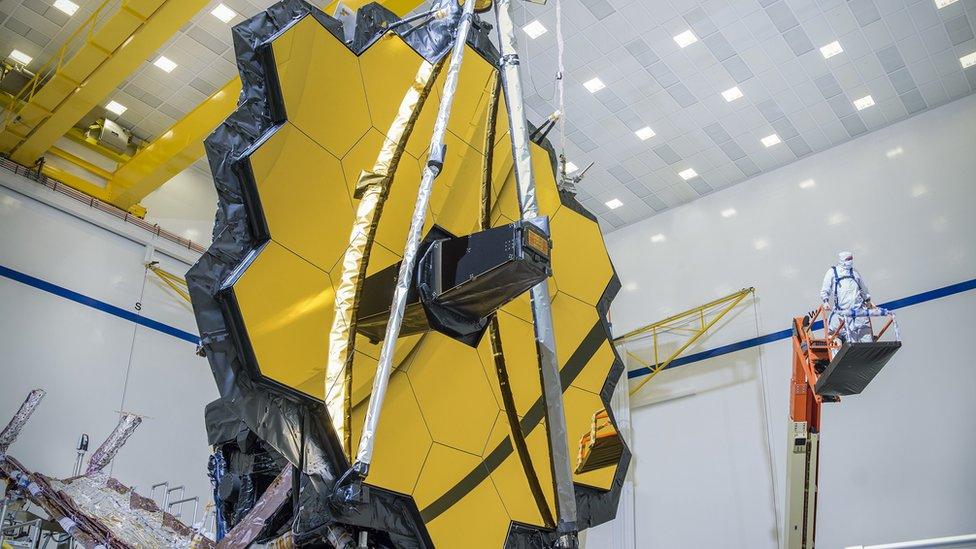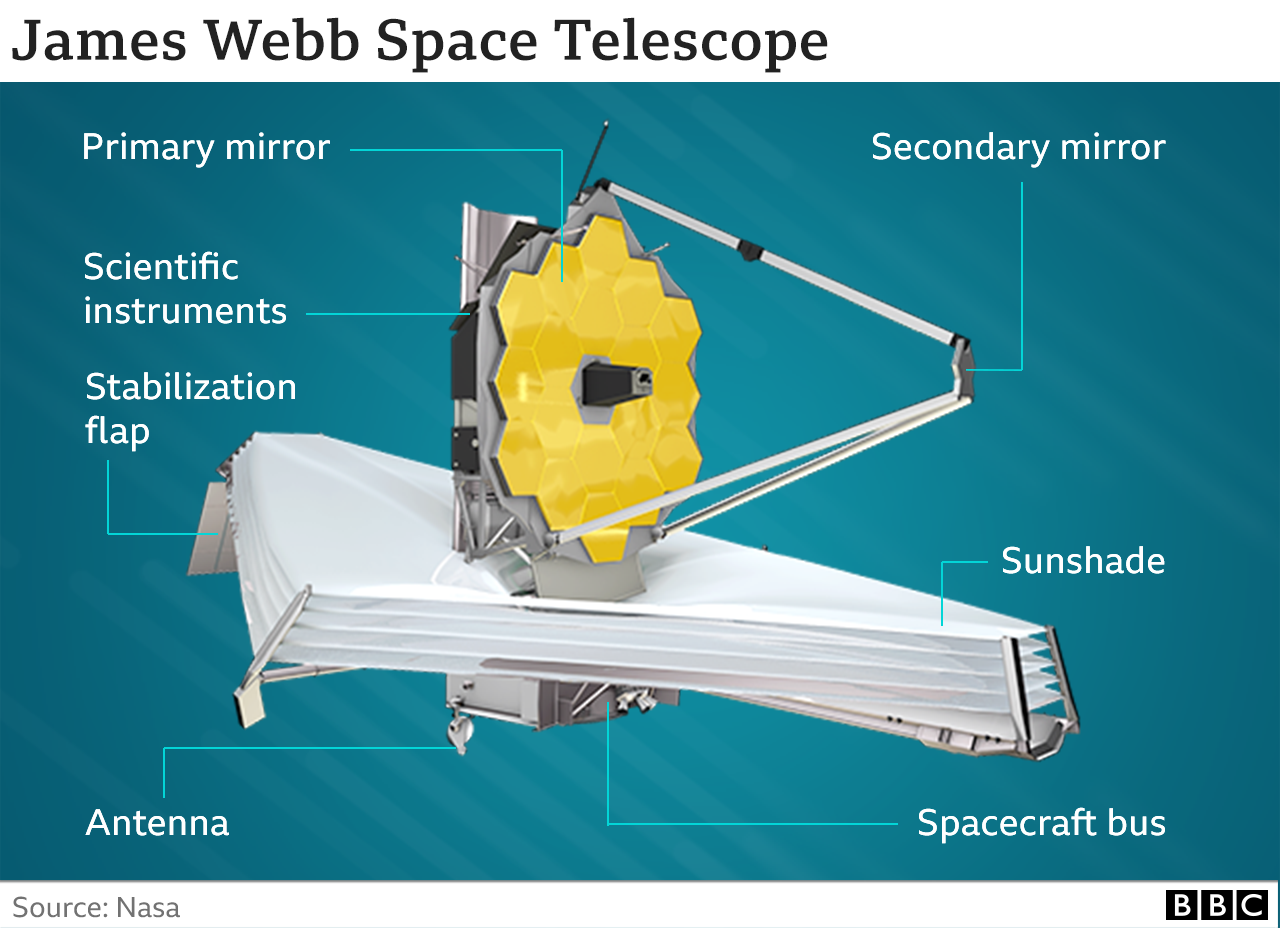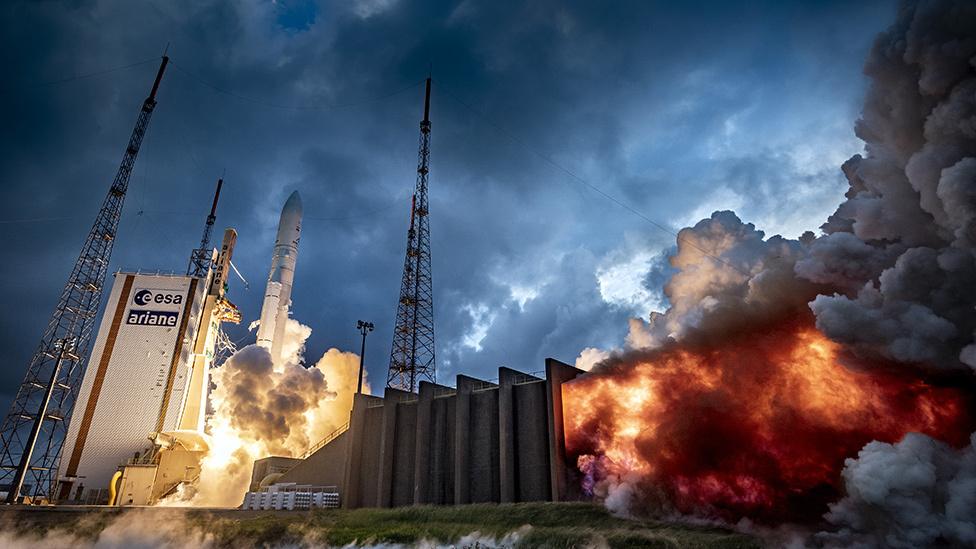James Webb: Hubble successor given mid-December launch date
- Published

JWST is so big, elements like its main mirror need to be folded to fit inside the rocket
It's a date for your diary and one that's not to be missed.
The $10bn James Webb Space Telescope is expected to launch on 18 December.
Yes, countless targeted lift-offs have come and gone in the past, but this one has a reality to it that the others didn't: the successor observatory to Hubble is now actually built.
All that is required is to ship the finished telescope to French Guiana, put it on the top of an Ariane rocket, light the engines and stand well back.
"It's fantastic for everybody; it's a real boost for all those that have worked on the project," said Prof Gillian Wright, the senior UK scientist on Webb who co-leads one of the telescope's four instrument packages.
JWST is a cooperative venture between the US, Europe and Canada. Their respective space agencies jointly announced the launch date on Wednesday.
Recent concerns about the readiness of the Ariane rocket to perform its most important mission of the year have been assuaged.
The parts that make up that vehicle have themselves just arrived at the Kourou launch site.
What follows next is a detailed timeline that will bring multiple elements together so that the final countdown can proceed as planned in mid-December.

JWST must now itself travel by sea from its construction base at Northrop Grumman in California. This involves a trip through the Panama Canal.
Information about the voyage is being kept secret so as not to attract the attention of pirates.
Once in French Guiana, the telescope will go through a last series of checks.
"I'll have two people there from our Mid-Infrared Instrument (Miri) team to ensure nothing untoward happened in the course of the shipment," explained Prof Wright. "And we'll be doing things like making sure the observatory can talk directly to the Ariane systems - things like that. But this is all routine."
The telescope will need to be fuelled (always a delicate process) and then lifted carefully to the top of the integrated Ariane.
Roll-out to the launch pad should occur on 16 December for dress rehearsals.
JWST is so big - the size of a tennis court - that it has to be folded to fit inside the clam-shell-shaped, protective fairing at the head of the rocket.
And that means of course that once in space, everything then has to be unfurled. This process, which takes place in the two weeks up to Christmas, will be an anxious affair, concedes Prof Wright.
"The rational side of me says everything has been tested many times over; I've seen all of the analysis. There's really nothing in there to worry about. But the not so rational side of me is saying 'Oh, my goodness, they're going to put this telescope on the top of a rocket and shake it to pieces'."
You shouldn't need to cross fingers, given how much effort and testing has gone into preparing Webb for this moment. And if all the work over the past few decades comes good, we are in for a spectacular treat.
JWST will do things no previous telescope has been able to do. With its stunning, gold-plated, 6.5m-wide primary mirror, it will see deeper into the cosmos than ever before. Indeed, the hope is it will detect some of the very first stars and galaxies to shine - distant objects whose light has taken more than 13 billion years to reach us.
"The James Webb Space Telescope will be the most powerful and complex telescope ever launched," said Dr Caroline Harper, the head of space science at the UK Space Agency.
"It will advance our understanding of the Universe by allowing scientists to hunt for the unobserved formation of the first galaxies and look inside dust clouds where stars and planetary systems are forming today."

James Webb will launch on Europe's Ariane-5 rocket
